Discover
Young Sounds UK bring Discover training to Aberdeen
We’ve been running our Discover training in England since 2008 and we’re now looking to start the programme in Scotland! Starting with free sessions in Aberdeen.
Read more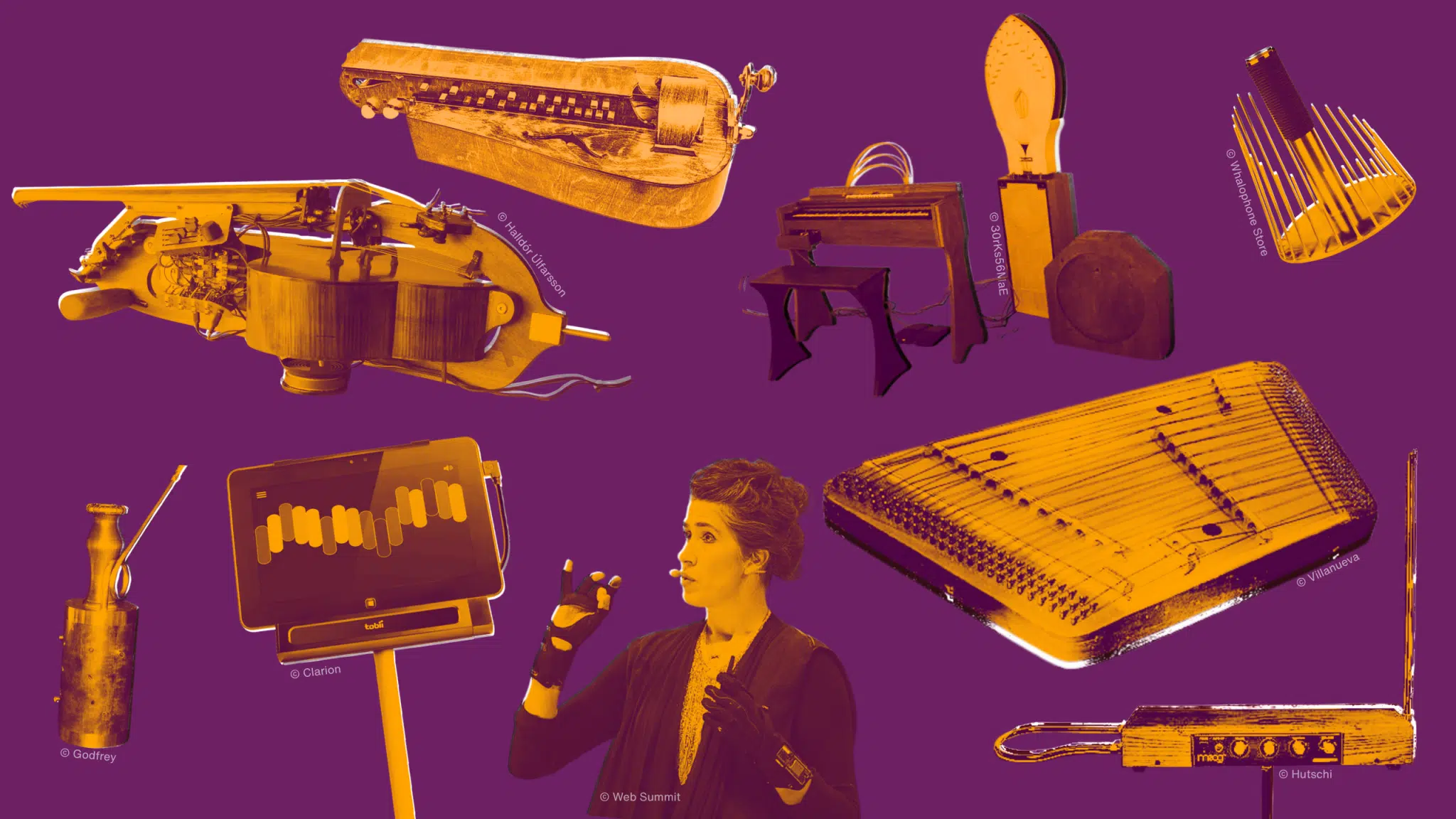
From the violin to the didgeridoo, every instrument in the world has its own story. On Uncommon Instrument Day (31 July), we look beyond the familiar pianos, guitars, cellos and flutes and instead explore the stories of lesser-known instruments, both old and new. Let’s take a look at some instruments that you may not have heard of!
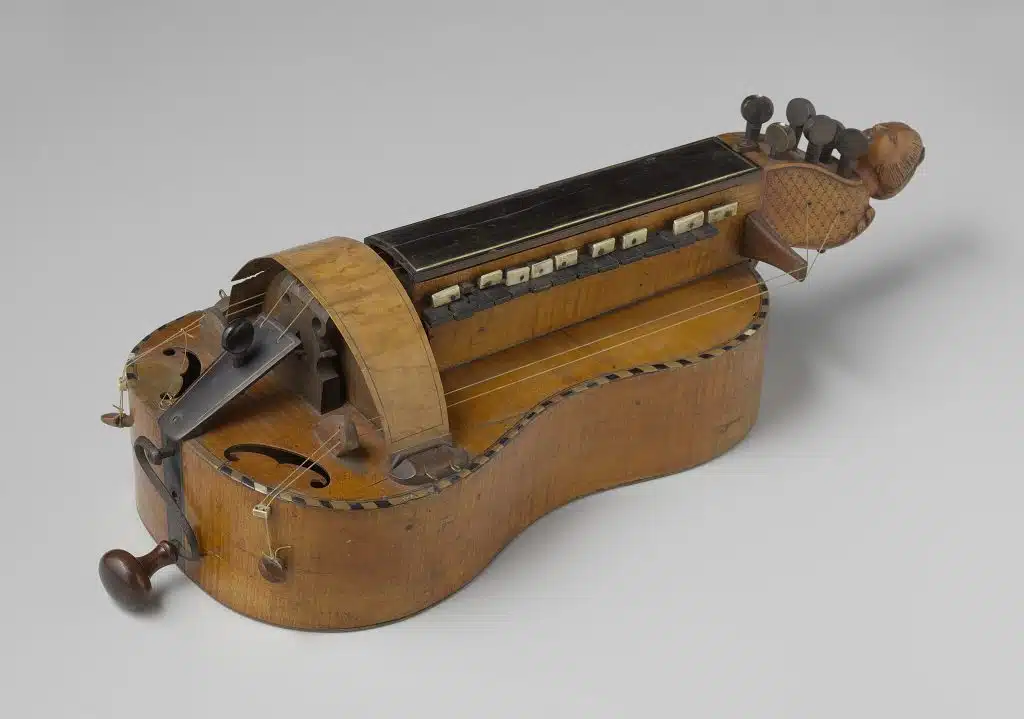
What is it?
A hurdy-gurdy is an ancient stringed instrument – its earliest versions date back to around the 10th century! To play it, the performer turns a crank which makes a rosined wheel rub against the instrument’s drone strings, like a violin bow. To change the pitch of the strings, the player presses small keys (made of wood or metal) against the strings.
What does it sound like?
Single notes played on the hurdy-gurdy can sound like a violin. In French, the name of this uncommon instrument roughly translates to “violin with a wheel”!
As heard on…
Check out Patty Gurdy and Nigel Eaton for some original songs featuring this fascinating instrument. Hurdy-gurdy can also be heard on ‘Low Man’s Lyric’ by Metallica and the Black Sail theme tune.
What is it?
Played since at least the 16th century, this baroque wind instrument is a predecessor to the bassoon and resembles a small table lamp. There are four sizes of rackett, from soprano to great bass, although they are all relatively small in size.
What does it sound like?
Many people say the rackett sounds like a bassoon mixed with the buzzy sound of a kazoo!
As heard on…
The rackett is unfortunately all but extinct now after it was largely replaced by the bassoon by the 18th century, but you can still see them in action online, like these videos from Unholy Rackett!
What is it?
The cimbalom is Hungary’s national folk instrument, but it’s hard to find in the UK. Created by V. Josef Schunda in Budapest in the late 19th century, the cimbalom is a hammered dulcimer instrument which is played by either plucking the strings or striking them with cotton-wound sticks. What sets the cimbalom apart from similar hammered dulcimers is that it’s fully chromatic, has a 4-octave range and even a sustain pedal!
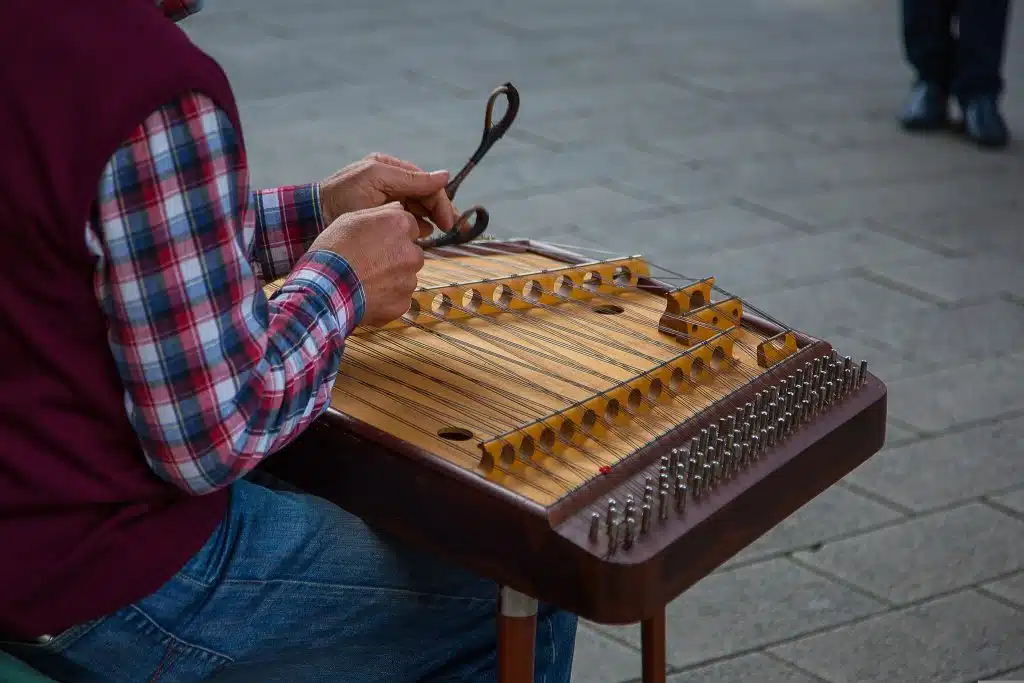
What does it sound like?
The cimbalom has a distinctive ‘metallic’ tone, sounding somewhere between a piano and a harp.
As heard on…
This uncommon instrument appears in a lot of contexts, from film scores and classical music to folk and even rock. Stravinsky was a fan of the instrument, and incorporated it into several of his works, including his ballet Renard. In film, the cimbalom can be heard in Lord of The Rings: The Two Towers, Raiders of the Lost Ark, The Golden Compass and The Grand Budapest Hotel.
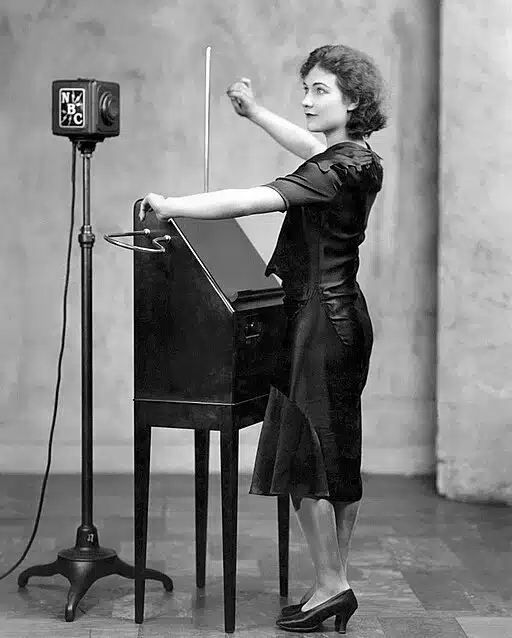
What is it?
Invented in 1920 by Leon Theremin, the theremin is an electronic musical instrument played without any physical contact! The performer (or thereminist) will control the instrument’s pitches with one hand hovered above the instrument and control the volume of the sound with their other hand.
What does it sound like?
Although it certainly doesn’t look like one, the theremin sounds a bit like a stringed instrument. Think about if a violin met an alien spacecraft!
As heard on…
Due to the eerie, atmospheric nature of the instrument, the theremin lends itself to many film and TV scores – mainly sci-fi, horror and thrillers. You might have heard this uncommon instrument featured on the theme for Disney+’s Loki, or Bernard Herrmann’s The Day the Earth Stood Still.
What is it?
Invented in 1928, the Ondes Martenot is perhaps one of the earliest versions of the electronic instruments we are more familiar with today. It is played by placing your finger in a metal ring connected to a wire and sliding your finger up and down a board to change the pitch. The volume is controlled by a button on the left side of the instrument and played through speakers.
Although the Ondes Martenot’s keyboard design was originally only a visual guide so the player (or ‘ondist’) would know where to play specific notes, later models of this uncommon instrument allowed you to play the actual keyboard.
What does it sound like?
The Ondes has a variety of different waveforms to choose from to alter the tone of the instrument. The most common sound used is like a theremin – a stringed instrument with an otherworldly sound.
As heard on…
The Ondes Martenot has been revived through popular music, notably by Radiohead guitarist Jonny Greenwood. You can hear the Ondes on Radiohead’s 2000 album Kid A, “The National Anthem” and “How to Disappear Completely”. The instrument can also be heard on Daft Punk’s 2013 album Random Access Memories.
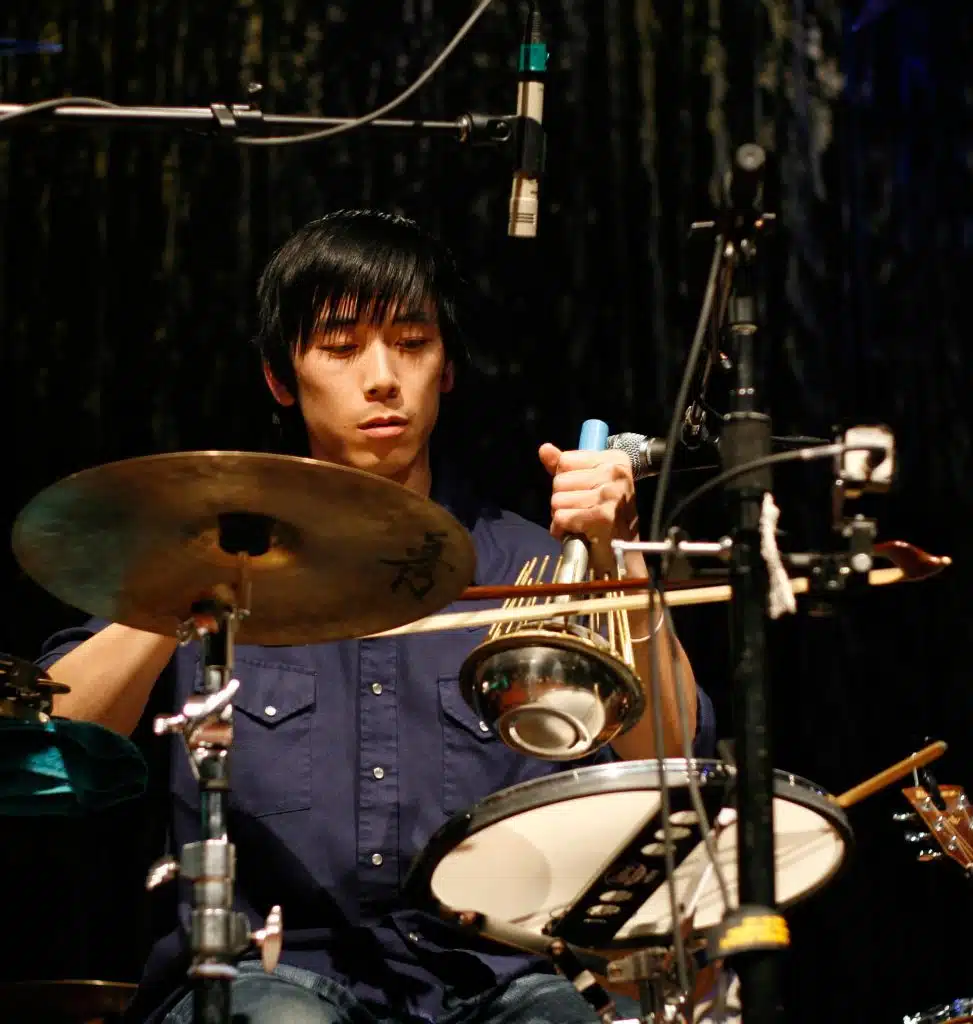
What is it?
The waterphone is an idiophone made up of a steel bowl with a cylinder neck in the middle, with metal rods of different sizes around the rim of the bowl. The resonator of the instrument is sometimes filled with a small amount of water, which gives the instrument’s sound an ethereal quality.
What does it sound like?
Waterphones can be played with bows, or even struck. They create a harsh metallic tone, and depending on the pitch you play at, can sound low and resonant like whale song or like a piercing shriek!
As heard on…
The waterphone’s abrasive sound lends itself to film and TV. You’ve probably heard a waterphone in the background of The Matrix, Aliens, or an episode of Gordon Ramsay’s Kitchen Nightmares!
What is it?
Playing a conventional musical instrument is simply not an option for some musicians. Working with young Disabled people, teachers and music leaders, Open Up Music invented the Clarion, an accessible musical instrument which can be played with any part of the body. It can even be played using the movement of your eyes!
The Clarion is currently only available through Open Up Music’s Open Orchestras and the National Youth Open Orchestra, but you can register your interest here.
What are they?
Invented by a creative team led by musician Imogen Heap, MiMu Gloves are a unique wearable musical instrument. The gloves allow the performer to create sound and music production through movement. Linked to a software called Glover, each movement of the hand, arm and finger can manipulate sound.
What do they sound like?
The gloves can be played with another instrument (such as to control sound whilst playing a piano or singing), or by themselves. This means there is no limit to what this uncommon instrument can sound like!
As heard on…
Imogen Heap has demonstrated the MiMu Gloves in numerous live settings. Check out the gloves at her Tiny Desk Concert below.
Musician and Disability Rights Activist Kris Halpin is also known for wearing the MiMu Gloves and used them extensively in his award-nominated live show, The Gloves Are On.
What is it?
Developed in 2008 by Icelandic artist Halldór Úlfarsson, the halldorophone is like an electro-acoustic cello that uses feedback to produce rich, resonant tones.
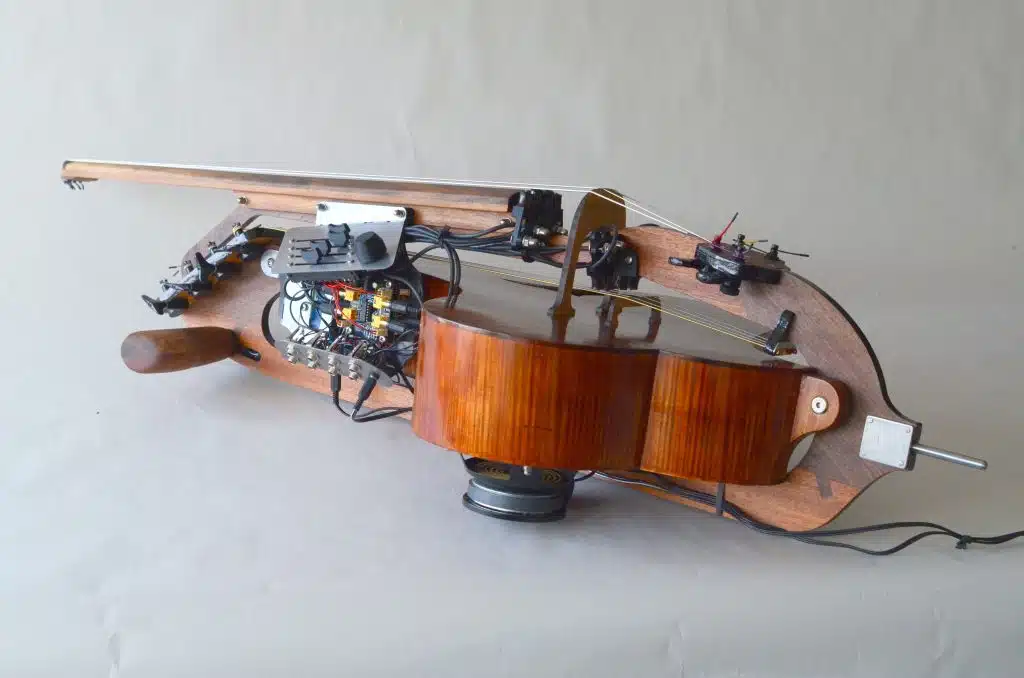
What does it sound like?
This uncommon instrument sounds like a cello, but its pickups and speakers create droning tones outside of what is being played. Whilst many musicians try to avoid feedback when playing electronic instruments, feedback is actually a key element in the halldorophone’s sound!
As heard on…
The halldorophone gained some popularity after it was used by Icelandic composer Hildur Guðnadóttir for her Academy Award-winning soundtrack for Joker.
Although we have shed a spotlight on some lesser-known instruments here, it’s important to note that any instrument could become “uncommon” without musicians to play it! Unfortunately, we have already seen some instruments become ‘endangered’. In November 2023, the RNCM launched a fundraising appeal to “safeguard” instruments in decline due to underfunded music education, such as the viola, oboe, bassoon, and double bass.
Our work allows young musicians – and their instruments – to grow and thrive. Find out more about how you can help us give musical talent a chance.
We’ve been running our Discover training in England since 2008 and we’re now looking to start the programme in Scotland! Starting with free sessions in Aberdeen.
Read moreMalcolm Touchin tells us about how creating The Colin Touchin Music Leadership Award with Young Sounds UK has allowed his brother's legacy to live on.
Read moreEQUALIZE is a cross-sector collaboration bringing electronic and Black-British music to the classroom.
Read morePurposeful Ventures share our drive for change and their investment in our work is hugely appreciated.
Read more